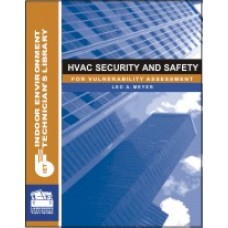
|
| Richard D. Alaniz |
The National Labor Relations Board’s (NLRB’s) top lawyer recently threw the fast food industry into turmoil by indicating that McDonald’s could be jointly responsible for employees, along with its franchisees. But other NLRB actions and court decisions have taken the issue of joint employers, independent contractors, and leased employees far beyond a single industry. These changes could profoundly impact the liability and responsibility companies have regarding contractors and contingent employees. Consider:
• The NLRB has announced that it is considering a sweeping overhaul of the decades-old definition of joint employer, through the Browning-Ferris Industries of California, Inc., et al. case. That case involves subcontractors and who exactly employs them: Browning-Ferris, its subcontractor Leadpoint, or both. Sanitary Truck Drivers and Helpers Local 350, which is seeking to represent the employees, requested a ruling on which company employs the workers. If the NLRB determines that Browning-Ferris jointly employs the workers, it would mark a dramatic change in the ways that employers and their subcontractors have operated for years.
• Earlier this year, FedEx Ground agreed to settle a lawsuit with 141 drivers that the company had classified as independent contractors. Under the terms of the agreement inScovil v. FedEx Ground Package System, Inc., d/b/a FedEx Home Delivery, Case No. 1:10-cv-00515-DBH (D. Maine, March 14, 2014), the drivers will receive $5.8 million for the misclassification lawsuit they brought under federal and Maine wage and hour laws.
• In EEOC and Maurice Knox v. Skanska U.S.A. Building, Inc., CaseNo. 12-6236 (6th Cir. Dec. 10, 2013), the Sixth Circuit Court of Appeals found that Skanska, a general contractor, was a joint employer with its subcontractor. In that case, Maurice Knox, an employee of a subcontractor, sued Skanska claiming racial discrimination and retaliation. The appeals court found that Skanska routinely directed and controlled that employee’s work while the staffing agency had “minimal oversight.”
• Facing a class-action lawsuit brought by home improvement contractors who alleged that they were misclassified as independent contractors rather than employees, Lowe’s Home Centers recently agreed to a $6.5 million settlement in Shepard v. Lowe’s HIW, Inc., Case No. 12-CV-03893-JSW (N.D. Cal. May 23, 2014).
• In 2013, a federal judge ordered kgb USA Inc. to pay $1.3 million in minimum wage compensation to 14,568 of its current and former employees nationwide for violations of the Fair Labor Standards Act (FLSA). The consent judgment and order resolved an investigation by the U.S. Department of Labor’s Wage and Hour Division that found the company misclassified employees as independent contractors and paid them a piece rate, without regard to the number of hours they worked. “Misclassification of workers as independent contractors is a serious threat to their livelihood. Misclassifying workers also undercuts responsible employers who must compete with unscrupulous employers who do not obey the law,” said acting Secretary of Labor Seth D. Harris in a statement at the time. “The Department of Labor is committed to ensuring that employees are classified properly so that they receive both the pay they rightfully earn and the protections to which they are entitled — including minimum and overtime wages, family and medical leave, and unemployment insurance.”
According to the American Staffing Association, more than 3 million people are employed by staffing companies every week. Employers who are found to have misclassified workers or who are deemed to be joint employers can find themselves in trouble in areas as diverse as withholding taxes, to paying minimum wage, to discrimination claims under Title VII of the Civil Rights Act. In order to ward off possible regulatory actions and lawsuits, employers need to understand the current landscape and update their policies and procedures to ensure they are in compliance.
A Lack of Standard Definitions
For employers, determining whether an employee is an independent contractor or a so-called leased employee hired through a staffing agency, and whether they have responsibility as a joint employer, can be a frustrating and murky process.
The Internal Revenue Service (IRS) makes its own determinations for tax purposes. “It is critical that business owners correctly determine whether the individuals providing services are employees or independent contractors. Generally, you must withhold income taxes, withhold and pay Social Security and Medicare taxes, and pay unemployment tax on wages paid to an employee. You do not generally have to withhold or pay any taxes on payments to independent contractors,” the IRS instructs on its website.
According to the IRS, figuring out whether a worker is an employee or independent contractor revolves around the degree of control and independence between employer and worker in three categories: behavioral; financial; and type of relationship.
The Labor Department’s Wage and Hour Division (WHD) also often weighs in and may become involved in questions of whether employees have been misclassified. “The misclassification of employees as something other than employees, such as independent contractors, presents a serious problem for affected employees, employers, and to the entire economy,” according to WHD’s website. “Misclassified employees are often denied access to critical benefits and protections — such as family and medical leave, overtime, minimum wage, and unemployment insurance — to which they are entitled. Employee misclassification also generates substantial losses to the Treasury and the Social Security and Medicare funds, as well as to state unemployment insurance and workers compensation funds.”
Under the auspices of Vice President Biden’s Middle Class Task Force, the Labor Department has launched a “memorandum of understanding” with the IRS. Under this agreement, the agencies work together and share information to reduce the incidence of misclassification of employees, in order to reduce the tax gap and improve compliance with federal labor laws. The Labor Department is also working at the state level, and 14 states have signed memoranda of understanding with WHD. In some cases, states are also working with the Employee Benefits Security Administration (EBSA), Occupational Safety and Health Administration (OSHA), Office of Federal Contract Compliance Programs (OFCCP), and the Office of the Solicitor. The Labor Department is trying to get other states to sign their own agreements.
How to Stay Compliant
Employers who inadvertently misclassify employees, or that are found to be joint employers, may face headaches and exposure to risk on numerous fronts — from private lawsuits, to IRS actions for back taxes, to increased vulnerability to union-organizing activities. A shifting legal landscape and changing priorities by the NLRB are only complicating issues for employers.
In order to be in compliance now and in the future, employers must take several steps:
• Bring in legal and human resources
The intricacies of subcontracting relationships and joint employer status are complicated. Executives should work closely with legal counsel and human resources to understand the issues involved, identify any potential problem areas, and move quickly to address them.
• Determine if current employees are properly classified
When trying to figure out if employees are truly independent contractors or if the company can be considered a joint employer with another organization, such as a franchisee or staffing company, the courts and agencies typically look at several factors. Courts and regulators will consider the economic realities and day-to-day nature of the work relationship, not what exists on paper.
Generally, determinations will involve how much control and supervision the company has over independent contractors or leased employees. The greater the level of control, the more likely that the employee could be considered a regular employee or the company could be held as a joint employer.
In some cases, employers may need to overhaul their current processes, or rewrite contracts and change supervisory duties to clarify relationships. Companies should perform regular audits of job categories to ensure that they remain relevant.
• Work with trusted staffing companies
Employers that use staffing companies can take several steps to minimize risk and liability. They should make sure that the staffing company maintains as much control as possible over the employees in terms of setting pay, defining work assignments, lines of reporting, discipline, and other employment matters. Companies should also set clear limits to differentiate leased employees from full-time employees, such as creating different types of badges for leased employees.
Creating explicit contracts with reputable companies, and clearly outlining respective responsibilities, can help to head off many potential issues.
• Standardize complaint and whistleblower processes
To ward off questions of harassment or discrimination, companies should not expect to shift blame to a staffing company or other entity. Policies and procedures should be consistent for all employees, regardless of who actually signs their paychecks or who those employees technically report to.
• Understand all state and federal laws
The NLRB’s upcoming decision in the Browning-Ferris case could have a profound impact on employers who subcontract. Employers should be following the case and be prepared to react if the NLRB makes a dramatic shift in the definition of the joint employer.
Employers also need to be aware of different state laws that could impact how they classify workers. For example, in California, multiple state agencies can be involved in determining independent contractor status: the Employment Development Department, which is concerned with employment-related taxes; the Division of Labor Standards Enforcement, which is concerned with whether the wage, hour, and workers’ compensation insurance laws apply; the Franchise Tax Board; Division of Workers’ Compensation; and the Contractors State Licensing Board.
When companies use subcontractors or work with staffing companies, there can be tremendous benefits for everyone involved. However, in order to avoid liability and other issues, companies need to minimize fallout from potential pitfalls.
Publication date: 10/20/2014
Want more HVAC industry news and information? Join The NEWS on Facebook, Twitter, and LinkedIn today!











